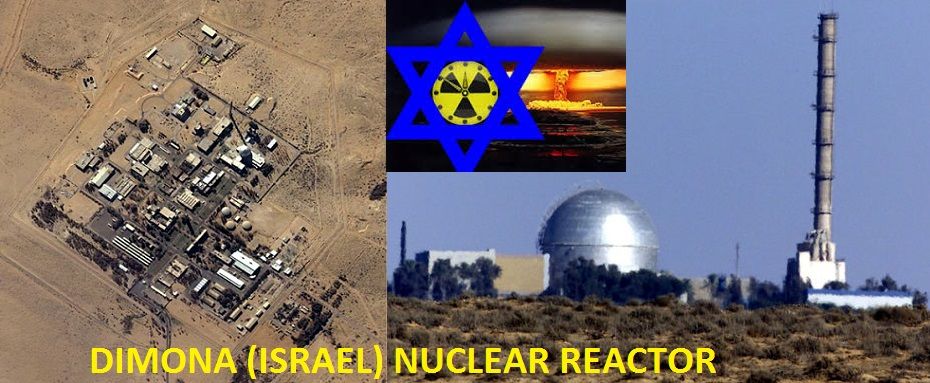
What is the
real nuclear threat in the Middle East?
by Manlio
Dinucci
« Iran
is not respecting the nuclear agreements » (Il Tempo), « Iran
withdraws from the nuclear agreements – a step towards the atomic bomb » (Corriere
della Sera), « Iran is preparing atomic bombs – goodbye to the nuclear
agreement » (Libero) . This is the way that almost all of the
media have presented Iran's decision, after the assassination of General
Soleimani ordered by President Trump, to no longer accept the limitations on
the enrichment of uranium planned in 2015 by the 5+1Group (United States, France, the United Kingdom, Russia, China,
plus Germany).
So these
organs of « information » are obviously in no doubt as to the source
of the nuclear threat in the Middle East. They are forgetting that it was President Trump, in 2018, who withdrew
the USA from the agreement, which Israël had described as « the surrender
of the West to the Axis of Evil guided by Iran ». They do not say a word
about the fact that there is only one nuclear power in the Middle East – Israël
- which is not submitted to any form of control because it does not adhere to
the Non-Proliferation Treaty, which is, however, signed by Iran.
The Israëli
arsenal, shielded by a dense cloak of secrecy and omertà, is estimated
at between 80 and 400 nuclear warheads, plus sufficient plutonium to build
hundreds of others. Israël certainly also produces tritium, a radioactive gas with which it is
building new generation nuclear weapons. Among these are mini-nukes and
neutron bombs which, since they cause minimal radioactive contamination, would
be more adapted to targets close to Israël. The Israëli nuclear warheads are
ready for launching on ballistic missiles which, with the Jericho 3, have a
range of 8 to 9,000 kilometres. Germany supplied Israël (in the form of a gift
or for knock-down prices) with four Dolphin submarines modified for launching
Popeye Turbo nuclear missiles, with a range of approximately 1,500 kilometres. Silent,
and with the capacity to remain under water for a week, the Dolphins are
cruising in the Eastern Mediterranean, the Red Sea and the Persian Gulf, ready
on twenty-four hour alert for a nuclear attack.
The United
States, which have already supplied Israël with more than 350 F-15 and F-16 fighter-bombers, are
currently delivering at least 75 F-35 fighters, which also have both
conventional and nuclear capacity. The first squadron of Israëli F-35's became
operational in December 2017. Israël Aerospace Industries produce wing
components which make the F-35's invisible to radar. With this technology,
which will also be applied to Italian
F-35's, Israël is potentiating the attack capacities of its nuclear forces.
Israël, with
200 nuclear weapons permanently aimed at Iran, as was indicated by ex-US
Secretary of State Colin Powell in 2015 [1], is
determined to maintain its monopoly of the Bomb in the Middle East, by
preventing Iran from developing a civil nuclear programme which might one day
enable the construction of nuclear weapons, a capacity which is today possessed
by dozens of countries throughout the world. In the cycle of the exploitation of
uranium, there is no clear line between civil and military use of fissile
material. In order to block the Iranian nuclear programme, Israël is determined
to use whatever means it can. The assassination of four Iranian nuclear
scientists between 2010 and 2012 was
most probably the work of Mossad.
Israëli
nuclear forces are integrated in NATO's electronic system, in the framework of
the « Individual Cooperation Programme » with Israël, a country which
is not a member of the Alliance, but has a permanent mission at the Alliance's
headquarters in Brussels. According to the plan tested during the USA-Israël
exercise Juniper Cobra 2018, US forces would arrive via Europe
(especially from bases in Italy) to support Israël in a war against Iran [2], a war
which could start with an Israëli attack on Iranian nuclear sites, like the one
made on the Iranian site of Osiraq. The Jerusalem Post [3] confirms that Israël possesses
non-nuclear anti-bunker bombs, which can be used particularly with the F-35's,
able to hit the Iranian nuclear site at Fordow. But Iran, although it has no
nuclear weapons, has a military riposte capacity, which Yugoslavia, Iraq and
Libya did not possess at the moment of the attacks by the USA and NATO. In this
case, Israël could use a nuclear weapon by triggering a chain reaction causing
unforeseeable results.
[1]
« Israël :
200 armes nucléaires pointées sur l’Iran », par Manlio Dinucci,
Traduction Marie-Ange Patrizio, Il Manifesto (Italie) , Réseau
Voltaire, 15 mai 2018.
[2]
« Sous
l’emprise des USA et de l’Otan », par Manlio Dinucci,
Traduction Marie-Ange Patrizio, Il Manifesto (Italie) , Réseau
Voltaire, 13 mars 2018. Et « Droit de réponse de
l’Otan, réplique de Manlio Dinucci et commentaire du Réseau Voltaire »,
17 mars 2018.
[3] “Would Israel still need US bunker busters for
attacking Iranian nukes ?”, Yonah Jeremy Bob, Jerusalem Post,
January 3, 2020.
Translator: Pete Kimberley
DECLARATION OF FLORENCE
FOR AN INTERNATIONAL FRONT NATO EXIT
DANSK DEUTSCH ENGLISH ESPAÑOL FRANÇAIS ITALIANO NEDERLANDS
PORTUGUÊS ROMÎNA SLOVENSKÝ SVENSKA TÜRKÇE РУССКИЙ
DANSK DEUTSCH ENGLISH ESPAÑOL FRANÇAIS ITALIANO NEDERLANDS
PORTUGUÊS ROMÎNA SLOVENSKÝ SVENSKA TÜRKÇE РУССКИЙ
Manlio Dinucci
Geographer and geopolitical scientist. His latest books are Laboratorio di geografia, Zanichelli 2014 ; Diario di viaggio, Zanichelli 2017 ; L’arte della guerra / Annali della strategia Usa/Nato 1990-2016, Zambon 2016, Guerra Nucleare. Il Giorno Prima 2017; Diario di guerra Asterios Editores 2018, Premio internazionale per l'analisi geostrategica assegnato il 7 giugno 2019 dal Club dei giornalisti del Messico, A.C.

No comments:
Post a Comment
Note: Only a member of this blog may post a comment.